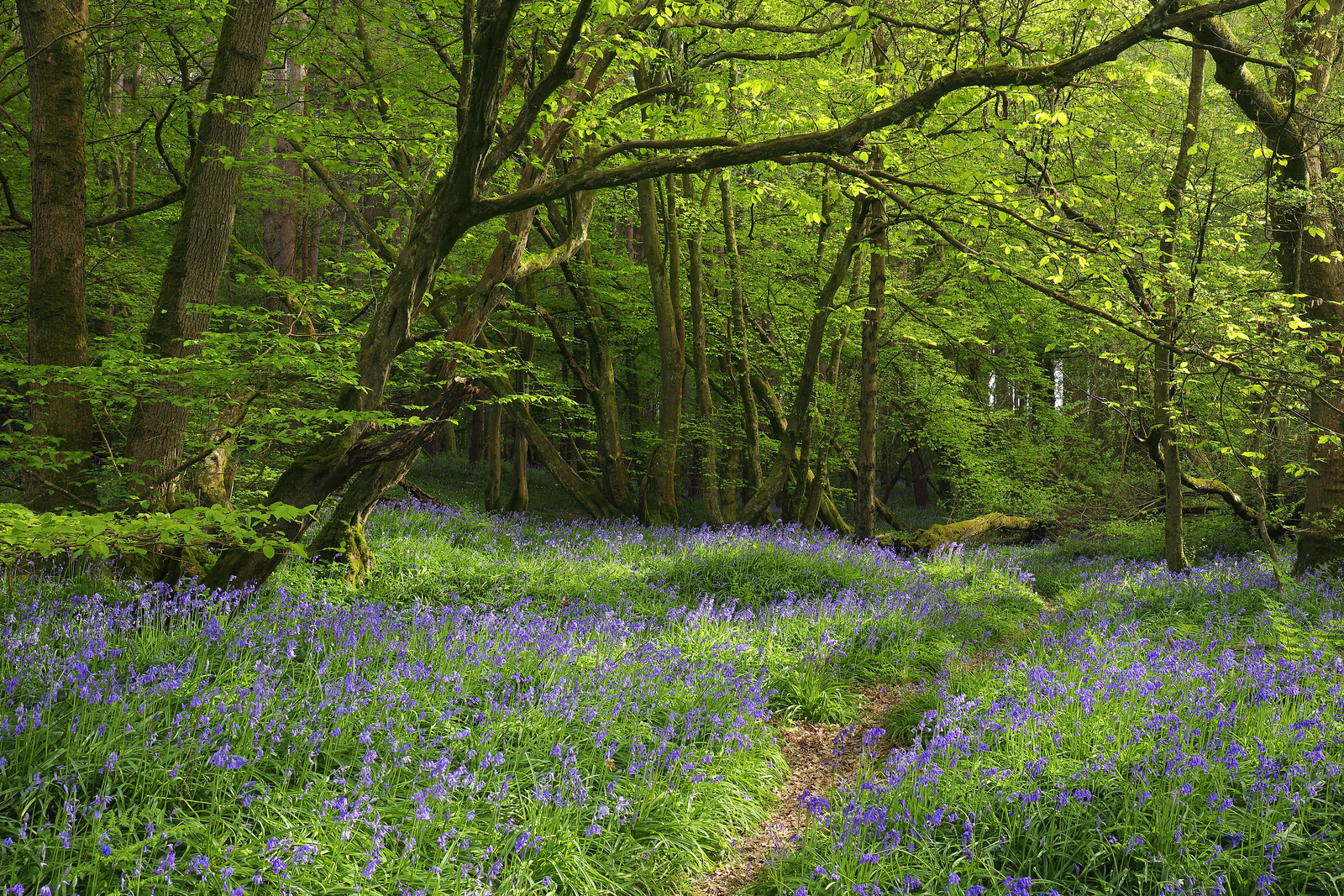The Secret Bluebell Woods of Sussex

The presence of dense bluebell carpets signifies that you are in ancient woodland. It can take hundreds of years of self-propagation for bulbs to reach the kind of densities seen across the British Isles in spring. They push up through the earth in late winter, taking advantage of leafless trees to photosynthesise, before flowering in late April or early May. Even as a supporter of the right to roam, visitors ought to be more careful to avoid walking on bluebells, something annoyingly visible on my walks every spring. Last year, I found a two-metre wide walkway, created by visitors, who had flattened a long section of bluebells, instead of using existing paths to reach points of interest. This year, when visiting another bluebell wood to the north of Brighton, I was dismayed to see an estimated 20 m sq triangle of bluebells flattened by walkers, along with widespread general damage.
If flowering bluebells were to be dug up, no bulb would be found. Without foliage to regenerate and nourish depleted bulbs, which channel all their stored energy into growth, damaged bluebells take five years to recover. I always take great care to find the least damaging route to a vantage point, using fallen tree trunks and bare patches to navigate over to a safe position. I spoke to a couple, who have been walking in a particular East Sussex bluebell wood for twenty years about the damage in a nearby popular site, and they said — "Thank goodness not many people seem to know about this place". Would people buy flowers from garden centres, plant them in the ground, and trample over the plants they just paid for? People can't be prevented from entering bluebell woods, but since the easily crushed bluebells only need to be damaged once, I would prefer not to share the locations.

The cool, wet, unsettled weather of April 2023 delayed the peak blooming period by over a week, in comparison to last year, when frequent warm, albeit dry weather created an early, short-lived peak. Look at the above image to see how tall and open the bluebell flower heads were. On May 1st 2023, all the bluebells at this vantage point were closed. Look below at the 2023 version, to see how I have used my understanding of weather and lighting to create a dramatic image, as a cumulus cloud moving in-front of the sun created a sharp division between shadows and highlights.
Finally, before I go, here are some tips for taking better bluebell photographs:
1. Find new vantage points and keep them a secret to protect the bulbs from damage. It's easy to get drawn into honeypot sites, but many of the photos shown here are located not far from sites extensively damaged by the public.
2. Pay attention to weather patterns over winter when planning the date to photograph bluebells. A mild, dry winter and spring, such as in 2022, will result in an earlier, shorter-lived display. Winter cold snaps, followed by a cool, wet April, as in 2023, leads to bluebell flowering lasting longer and peaking later.
3. Bright, but diffused lighting is highly effective, if you photograph bluebells during normal waking hours. Direct sunlight creates harsh highlights and shadows, which can be distracting and creates issues when post-processing. The sun filtering through thin, high level clouds, especially in mid-evening, creates a glowing, warm lighting effect on the bluebells and forest canopy (see first two images).
4. Using a circular polarising filter to eliminate glare improves the appearance of foliage, while adding a small amount of focal length compression in the region of 50 mm increases the apparent density of bluebell carpets.
5. Most people get carried away by the naked eye attractiveness of bluebell woodlands, and forget to employ basic techniques used when photographing regular subjects. Good images are often simple and orderly. If you look at the above image, I have used tree trunks and limbs to provide natural framing, and the footpath leads the viewer towards the 'destination' clump of trees still in the shade.
Thank you for taking the time to read through my post on ancient bluebell woodlands. I felt much better by the second week, although my holiday went alarmingly quickly, which I made up for with a final visit on May 13th. I doubt many people will see my post, but I rely on your support in the comments section and for defeating the corporate-state controlled algorithms by sharing my post widely.











Comments